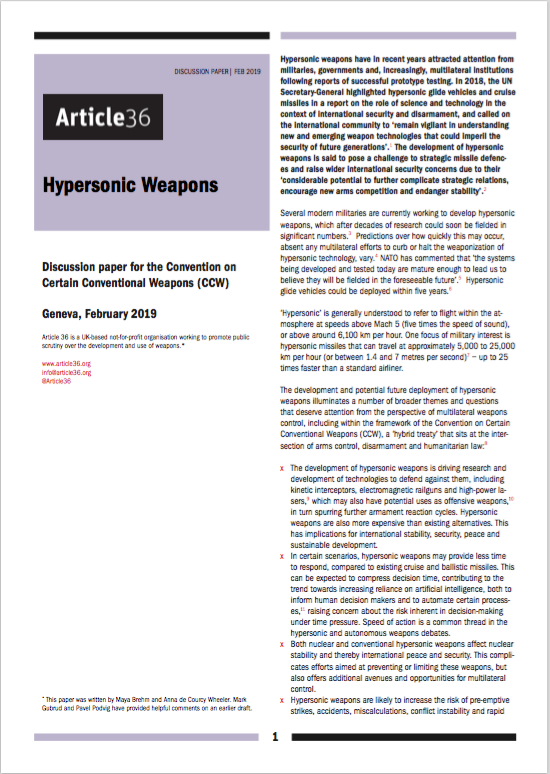
12.03.19
Hypersonic weapons: a threat to our common security
By Richard Moyes
The development of hypersonic weapons raises urgent concerns about international security, stability and peace, due to their considerable potential to further complicate strategic relations and encourage arms competition. Article 36’s new bulletin on hypersonic weapons – the latest in our series of policy-oriented papers on science, technology and weaponization – provides a brief overview of the current state of play in hypersonic glide vehicle and hypersonic cruise missile development.
Although no multilateral weapons control body has thus far given hypersonic weapons focused attention, the topic is increasingly raised in multilateral arms control, non-proliferation and disarmament circles following reports of successful prototype testing. A recent study by the UN Institute for Disarmament Research (UNIDIR) and the UN Office for Disarmament Affairs (UNODA) stresses that a multilateral process to address issues raised by hypersonic weapons is both feasible and desirable.
Widespread agreement among arms control experts that the developing arms race in hypersonic weapons is wasteful, destabilizing and dangerous is cause for optimism. However, hypersonic weapons tend to be framed as an issue of strategic relations between a handful of states who actively pursue these technologies. These states are expected to champion initiatives for weapons control. That leaves the majority of states and other actors without a stake in the debate despite the fact that the effects of hypersonic weapons will be felt by states and communities worldwide.
Recognizing how hypersonic weapons threaten our common security may help mobilize political will to move forward. Our bulletin surveys a number of existing regulatory frameworks that limit the use of, as well as other activities involving hypersonic weapons and synthesizes proposal put forward to prevent the emergence or deployment of hypersonic weapons, to control their possession, or to limit their use.
Download this discussion paper
Discussion Paper
February 2019